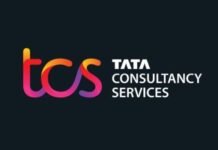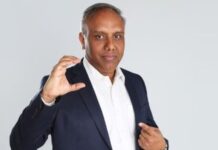
ORGANISATIONS WILLING TO GO THE EXTRA MILE TO ATTRACT AND RETAIN TALENT
Talent acquisition and management is the most crucial task for any organisation since these are the power houses that propel the organisation forward. Today’s workforce is generationally diverse with entities hiring individuals from different generations. For many years, the Baby Boomers held the reins and front ended as leaders in various organisations along with being mentors for the Gen X employees. With an ever-increasing number of Baby Boomers now exiting the workspace, it is time for next generations to step into their shoes and take up leadership roles.
“Every generation has an equal contribution to the holistic growth of an organisation. With the technologically advanced younger generations– Millennials & Generation Z now stepping onto the stage –it is important for previous generations to bridge the gap and ensure seamless flow of communication and exchange of knowledge”
Each group has its own distinct characteristics, values, and attitudes toward work, based on its generation’s life experiences. To effectively incorporate these diverse generations into the work environment, it is essential for organisations to introduce multiple programmes to build awareness and acceptance, and support employees to lead the change and the digital advancements. There is a need to establish a corporate culture that actively demonstrates respect and inclusion for its multigenerational workforce.
Further, the process of recruitment has also become complex as organisations harness technology to ensure all facets of hiring are covered, the person fits the profile and there are no gaps. Given the digital boom in all spheres, organisations prefer candidates who are not only digitally proficient, but also have hands-on experience of working with latest technologies like artificial intelligence and robotics.
To ensure holistic development of these young thriving minds, it is critical to formulate innovative programmes wherein the Gen Z and millennials can work effectively with the leadership, mostly coming from older generations. It will facilitate trading of ideas between the existing leadership and the trainees enriching them with valuable experience and insights. To ensure this, many organisations have extensively adopted the concept of ‘Reverse Mentoring’ and are implementing it aggressively. In this initiative, more seasoned officials are guided by the young people on current and emerging themes like digital innovation, effective use of social media etc. This is an excellent way to ensure that everyone in the organisation is aligned with the current trends leading to better synergies among employees across the spectrum and overall collaboration and communication improves significantly.
Needless to say, while technological changes have swept across organisations rather quickly, even then, it did not happen overnight. Corporates that had foreseen such changes long back were well-prepared to deal with the technology led disruption and its implications on the organisation, their employees and future hiring strategies.
Many organisations now have clear and well-defined training programs and policies in place to help their baby boomers or Gen X employees to cope with the influx of digitisation at workplaces. There are programs that train them on new software, social media, new devices and how all of this can be utilised in the best possible ways to ensure higher productivity and efficiency.
An important aspect of hiring today is to ensure the right mix of generalist and specialist employees in an organisation. The future organisations are more likely to be characterised by a dynamic T-shaped employee skill set which implies a right amalgamation of generalist and specialists. While the top line representing the generalist is expected to have a good basic knowledge and understanding of all operations, the vertical line beneath represents the skill sets of specialists who are expected to be masters in their domain and respective work area.
A conducive environment to grow as a professional that ensures work-life balance is the new ask of the young workplace. To ensure this, many employee friendly programs and policies have been introduced so that the employees stay engaged and motivated. Supportive policies like family leave policies, longer maternity and paternity leaves are being introduced. Special training programmes are being conducted for women employees so that they can easily acclimatise at the workplace post a career break. Further, there are dedicated people and programmes to keep them updated about all developments that take place in the organisation during their absence.
Organisations are driving well-defined leadership interventions catering to all generations’ in- order-to nurture and provide the best development for future leaders. These leadership interventions are strategically developing and creating leaders of tomorrow. By nurturing the future leaders and imparting the right development focused on education/experience/ exposure; succession planning is supported that guides career paths, thereby increasing retention of employees. In addition to nurturing and retaining the employees, leadership programs help in developing required leadership styles, better decision-making capabilities and higher productivity. The success of leadership interventions depends on leaders building leaders across levels, as an efficient leadership engine is driven.
Undoubtedly, an employee’s expectations from their organisation are changing dramatically and companies are ushering in innovative programmes and stepping up their engagement to attract and retain talent. While adapting to digital approach is critical, holistic development is an absolute must!








